
Day 2 of Comic-Con is over and now, the Convention is really underway! Today’s ScriptPhD.com coverage has a heavy focus on television, and sci-fi television to be specific. Really, is there any other kind? We spent time in the press room with the stars and producers of SyFy Channel hits Caprica and Stargate Universe, our favorite geeky physics show Big Bang Theory and the exciting (first-time ever!) Comic-Con Discovery Channel unveiling of their new scripted series Reign of the Dinosaurs. As always we try to pay hommage to the roots of Comic-Con with coverage of the design tricks behind comics and graphic novels. Additionally, we provide pictorial documentation of the costumes and happenings of the Con, and our Day 2 Costume of the Day. Complete coverage under the “continue reading” cut.
From the Press Room: Stargate Universe
We were delighted to start our day with the cast of one of our favorite sci-fi shows on the air, Stargate Universe, to get a little peek into the cast’s geeky sides and what they think of their characters and show.
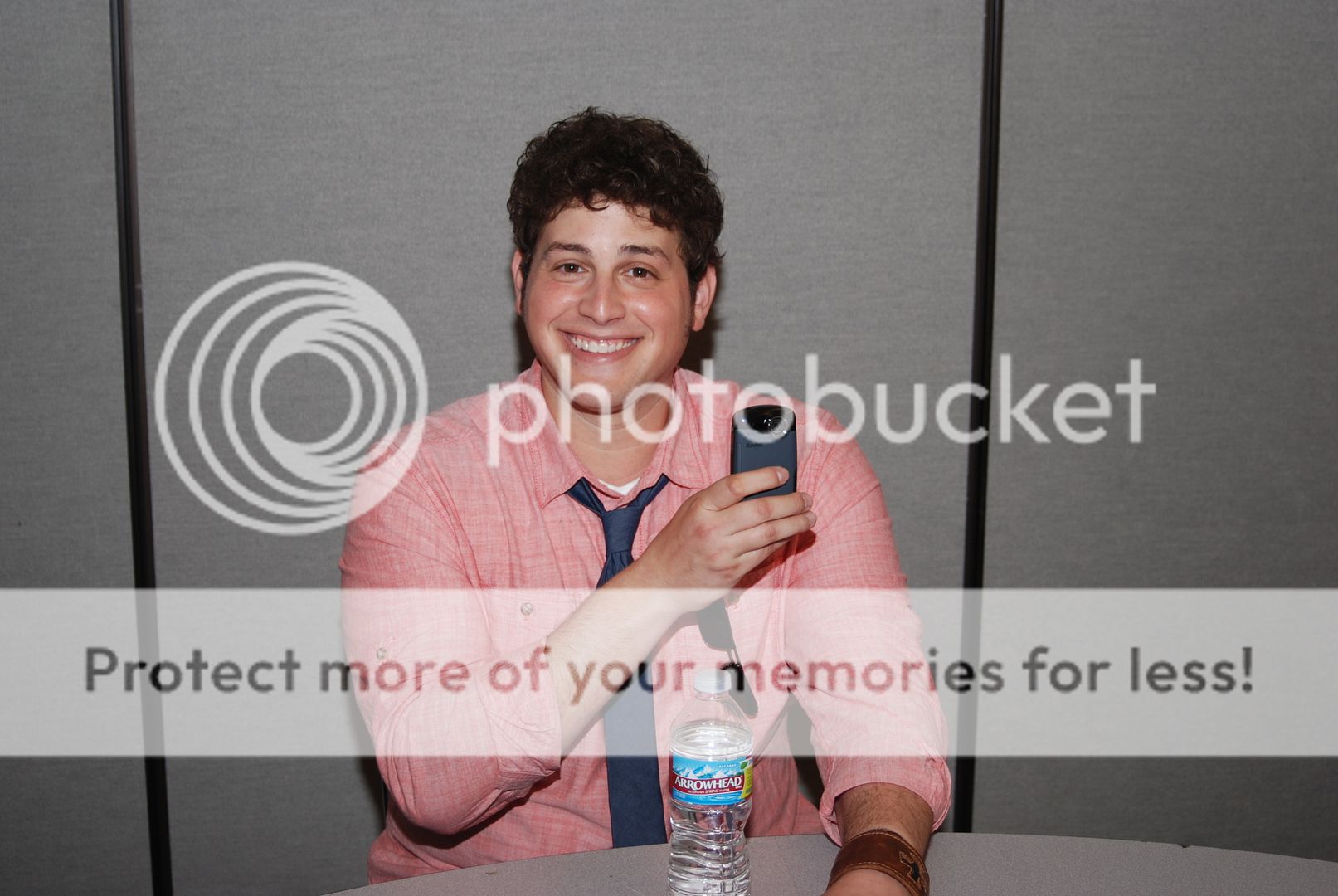
For star David Blue, playing the ship’s resident math geek Eli Wallace, this year is a completely different experience. Last year, there was so much uncertainty about the show’s acceptance and success, while this year, the cast walks into Comic-Con confident of where they are headed. He spoke of liking the idea of Eli as a hero, the show’s surrogate for the audience. Though he admits to being a geek, he was very hesitant to play the role when he heard about it, because of his previous computer nerd role on Moonlight for fear of typecasting. But Eli is not a stereotypical nerd, and experiences a lot more emotional and character growth over the course of Season 2. “I am proud to be a geek/nerd,” Blue says. “Everything from computer programming to comic books to video games.”
We were so thrilled to hear that David was a certified Grade A USDA organic geek, that we got him to proclaim so on camera for you guys:

Ming-Na, whose character Camile Wray is far more controversial and decisive on the show, was asked right off the bat what she’d do differently in real life as opposed to her character. “Well, I wouldn’t be a lesbian,” the married actress quipped. Turning more serious, she said that she wouldn’t be as level-headed and calm as her character, who is often asked to make difficult, morally ambiguous decisions based on emotional issues. The fan’s response to Camile is largely a love-hate relationship. She’s gotten great response from the gay community, something that Na appreciates, but Camile’s escape from cliches or stereotypes is something that has resonated. The morally wrenching decisions are a staple of the show (and sci-fi television in general), and will only continue into Season 2. “You may not like her decisions,” says Na, “But I like her.”
From the Press Room: Caprica
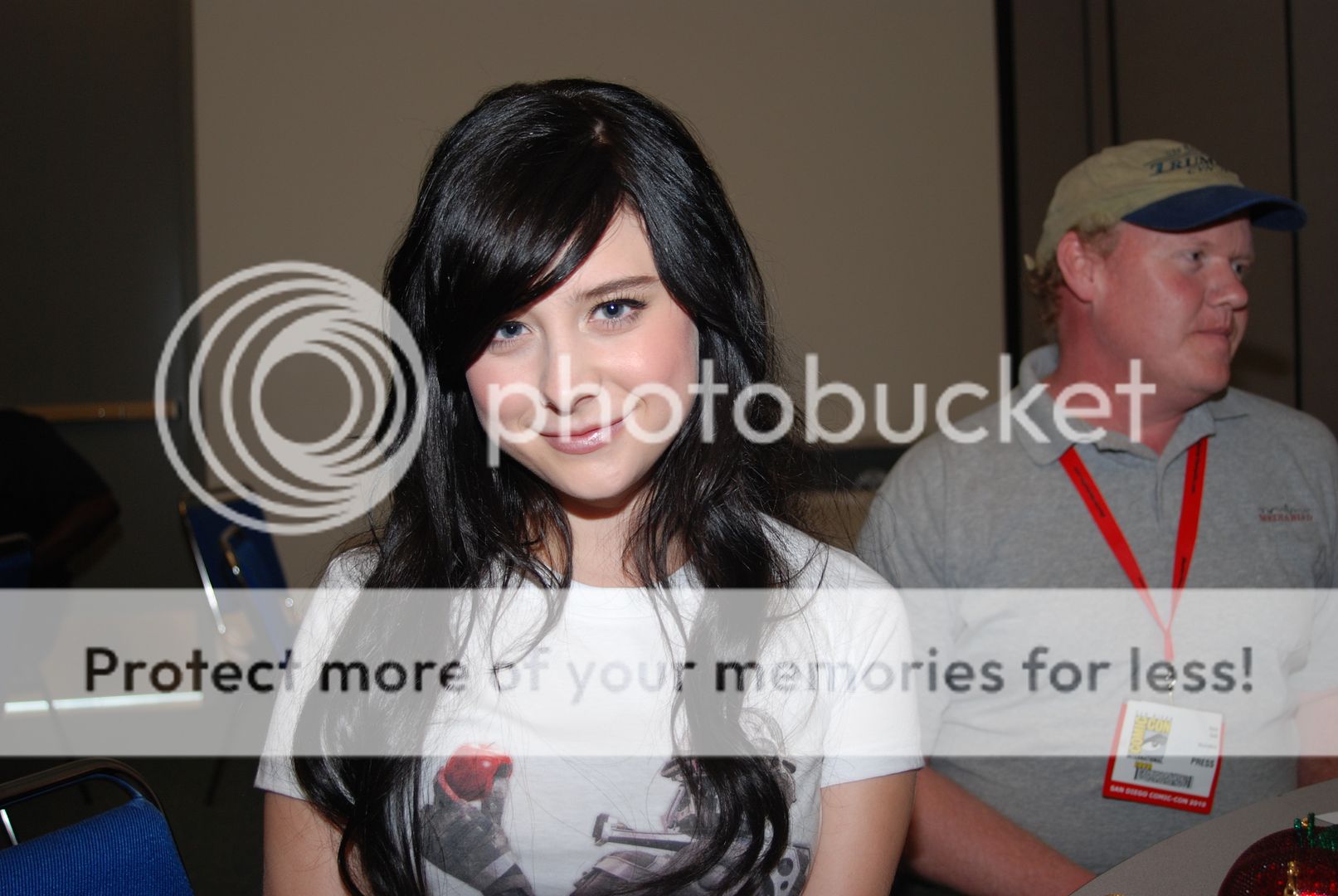
One of the most pivotal roles in the history of sci-fi television (the first Cylon) went to a girl that didn’t even really know the significance of the part. “I didn’t know what Battlestar was before I got the role,” admits Torresani, who was not a real sci-fi geek growing up. “I actually turned it down because I didn’t want to do [Caprica]. I wanted to do [Gossip Girl-type fluff]. It’s exciting now to [realize how important the role is], but it wasn’t nerve-wracking at the beginning. When I read the pilot, she was a spoiled brat, and then she gets in a robot. We didn’t know that I was going to be a Cylon. We just thought they’d use my voice and the robot’s body.” Filming the scenes as the Cylon, Torresani revealed, involves acting next to a giant green 7′ tall stick that everyone communicates with as the Cylon. She finds that the hardest part for her as an actress are scenes as the Cylon where she can’t communicate vocally, such as being lit on fire and not being able to utter a single word. “It’s really challenging. That’s something I never thought I’d have to do.”
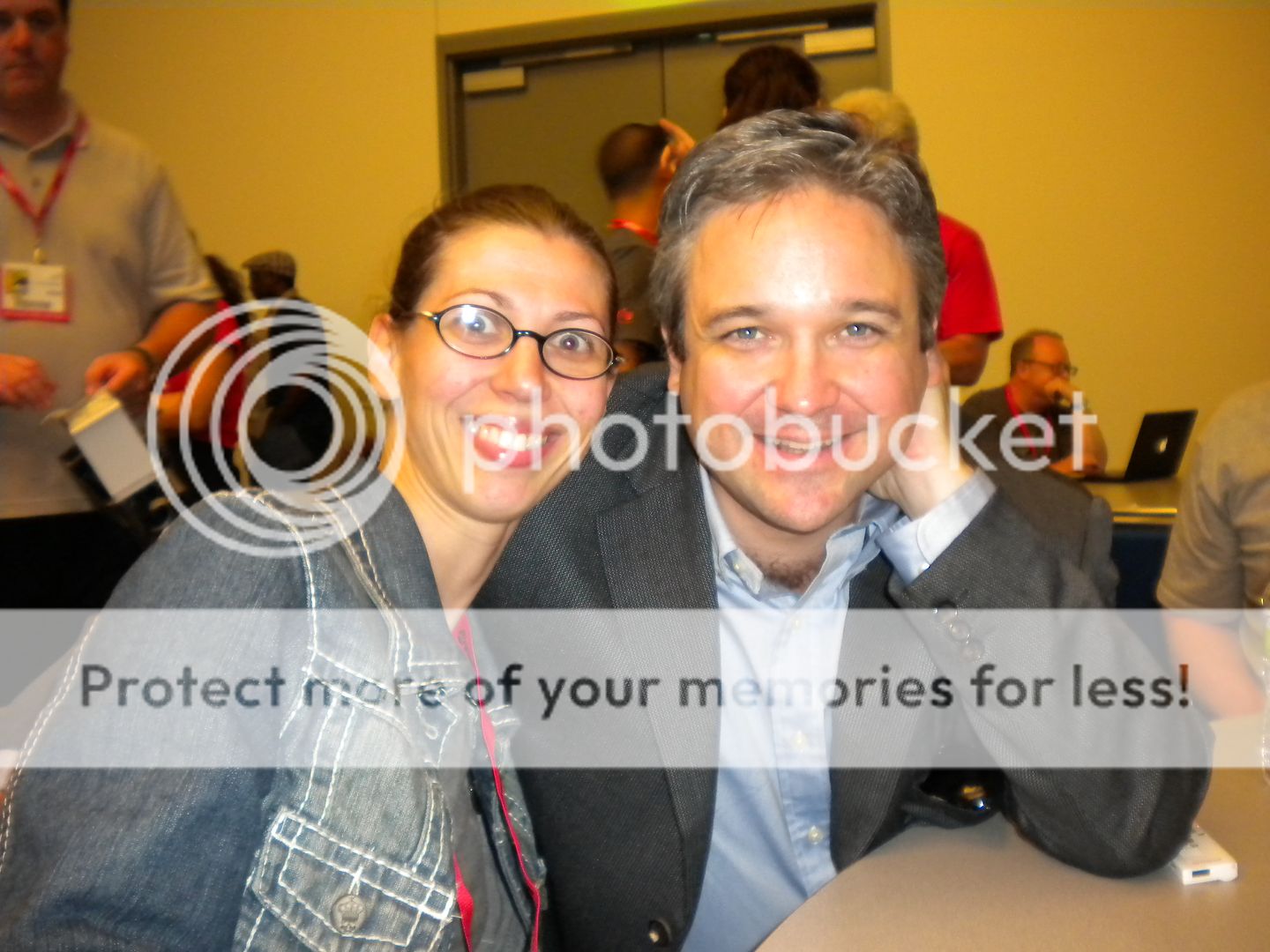
We started our time with executive producer David Eick with a humdinger—the question we know fans would want to ask. What has been the producers’ reaction to mixed reviews and fan division of the show, most notably from the Battlestar Galactica fanbase? “We knew to expect a much greater mix [of opinions] because we knew going in that we were not going to craft it or market it as a spin-off of Battlestar,” replied Eick. Rather than containing cheeky references to BSG or inside jokes only the audience knows, Caprica is very much its own beast. He hopes fervently that as the show finds itself and its own focus, that the audience, too, would find its own way in the show. He reminded us that the early days of Battlestar were equally contentious in terms of critical and fan opinions. “The very first Comic-Con we came to for Battlestar was like George W. Bush showing up at an ACLU rally.”
In many ways, he feels more challenged by Caprica, which lacks the ticking time-clock feel of BSG. It’s a more sophisticated style of storytelling, which is based in defining the characters and the world around then, Rome before the fall. The mythology of that world is deepened as the show progresses, and how it’s harnessed by Zoey to express herself. Eick spoke of how much more graceful and elegant Caprica is visually and content-wise, with Blade Runner being a huge influence on the producers and writers. By contrast, BSG had much more of a Black Hawk Down, action feel to it.
By the way, Ron and David have a longstanding tradition of taking a drink of tequila together before either a major show launch or major seminar/Convention. In fact, David brought the bottle and we all had a little fun. Kidding. But seriously, folks, next time you think the storylines on Caprica are getting a liiiiiiiittle wacky, just remember this picture:
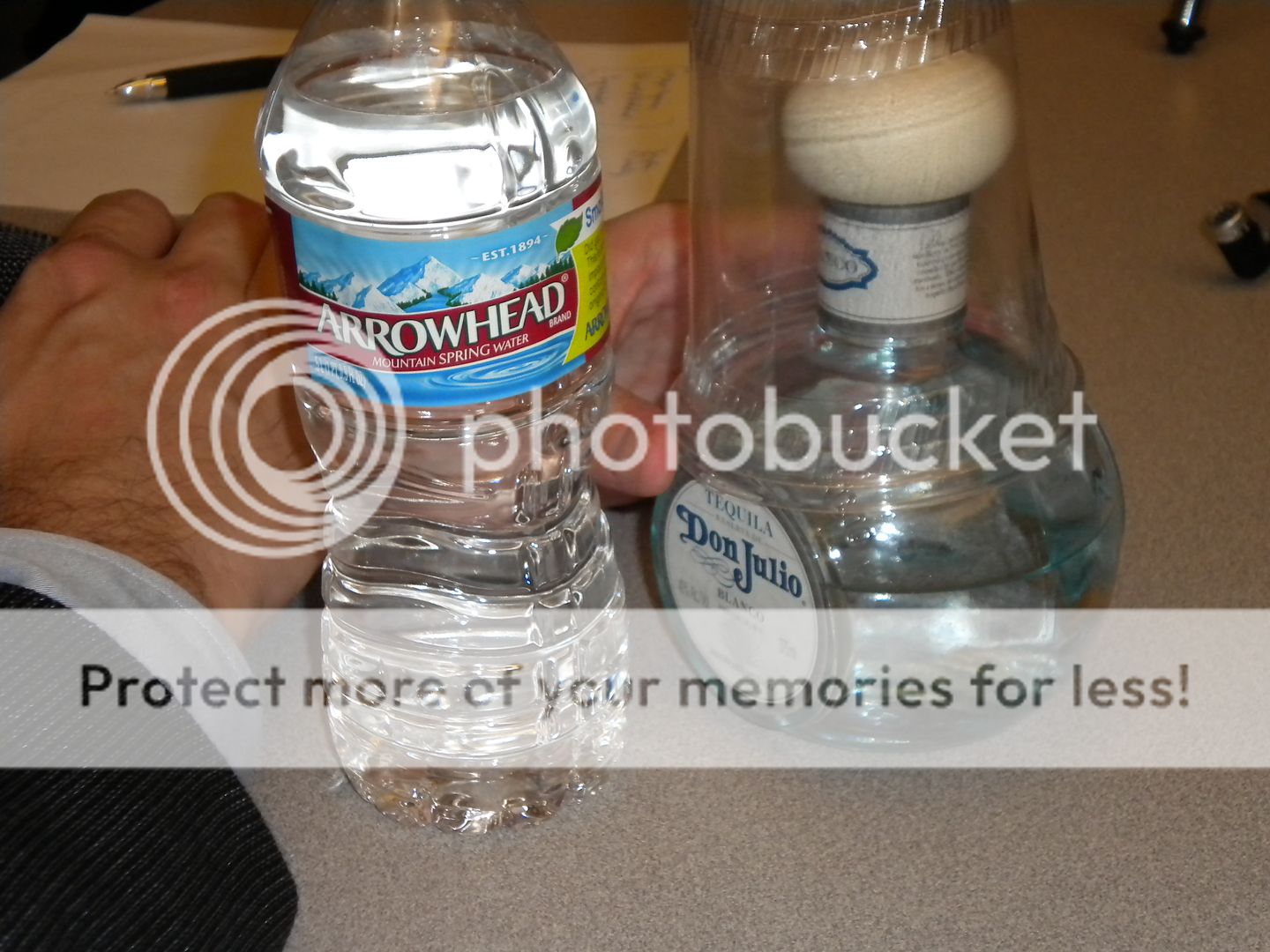
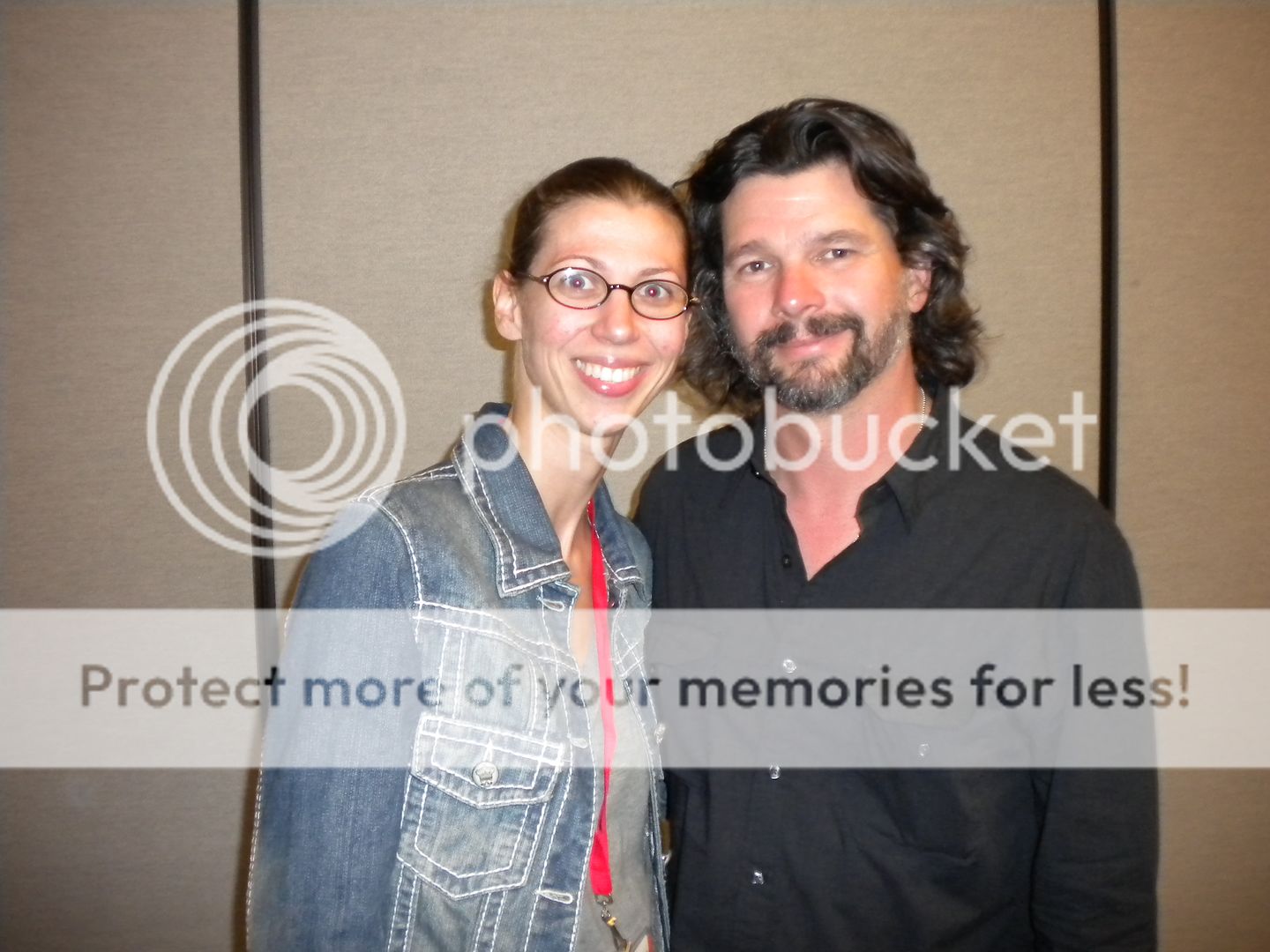
Ronald D. Moore, who made a rare media appearance at Comic-Con this year, largely echoed Eick’s comments. Caprica, he maintained is a serial, and (purposefully) as different from Battlestar Galactica as possible. In an even rarer move, Moore openly self-criticized himself for some of the early hiccups of the show. He admitted that it was hard to follow, that the story was indeed confusing, but that the show gained confidence as it went on. He predicted as strong of a build-up for Caprica as the eventual success of Battlestar Galactica. Another fun tidbit that Moore revealed was that the group marriage concept was tossed around for Battlestar Galactica, but just never found the story or the characters to make it happen.
We asked Ron about his thoughts on the current state of sci-fi and what he enjoys. “I’m probably not up to speed on a lot of other science fiction,” Moore said. “I almost avoid it now because I spend so much of my time in a science fiction world that I tend not to go there. It becomes almost like more work to watch other science fiction shows. In my brain, I’m inevitably thinking ‘How does that compare to us? And that’s their structure. How many characters do they have? I wonder what their CGI budget was.’ I haven’t watched a lot of other science fiction television for that reason.” Nevertheless, he maintains that it’s a thriving genre that will always be with us, despite the rise and fall of popularity. The one holy grail Moore hopes for is a broadcast network (read mainstream) sci-fi hit. He isn’t sure what the reason is that this popularity has remained so elusive, LOST notwithstanding. “Maybe it’s just us,” he mused. “Maybe it’s just us [the collective sci-fi geekdom], and there’s not this gigantic mass market for it in television in the way that there is a gigantic mass market for movies. Maybe that will never happen.”
We here at ScriptPhD.com hope otherwise.
From the Press Room: Big Bang Theory
If Ronald D. Moore is concerned about the viability of a basic network science fiction hit, at least he can take solace in Big Bang Theory, arguably the smartest, most successful, streamlined show about science and scientists in the history of television. We had such a fun time hanging out with the actors last year, that this year, with access to the full production team, we decided to get as much scoop from the show as possible.
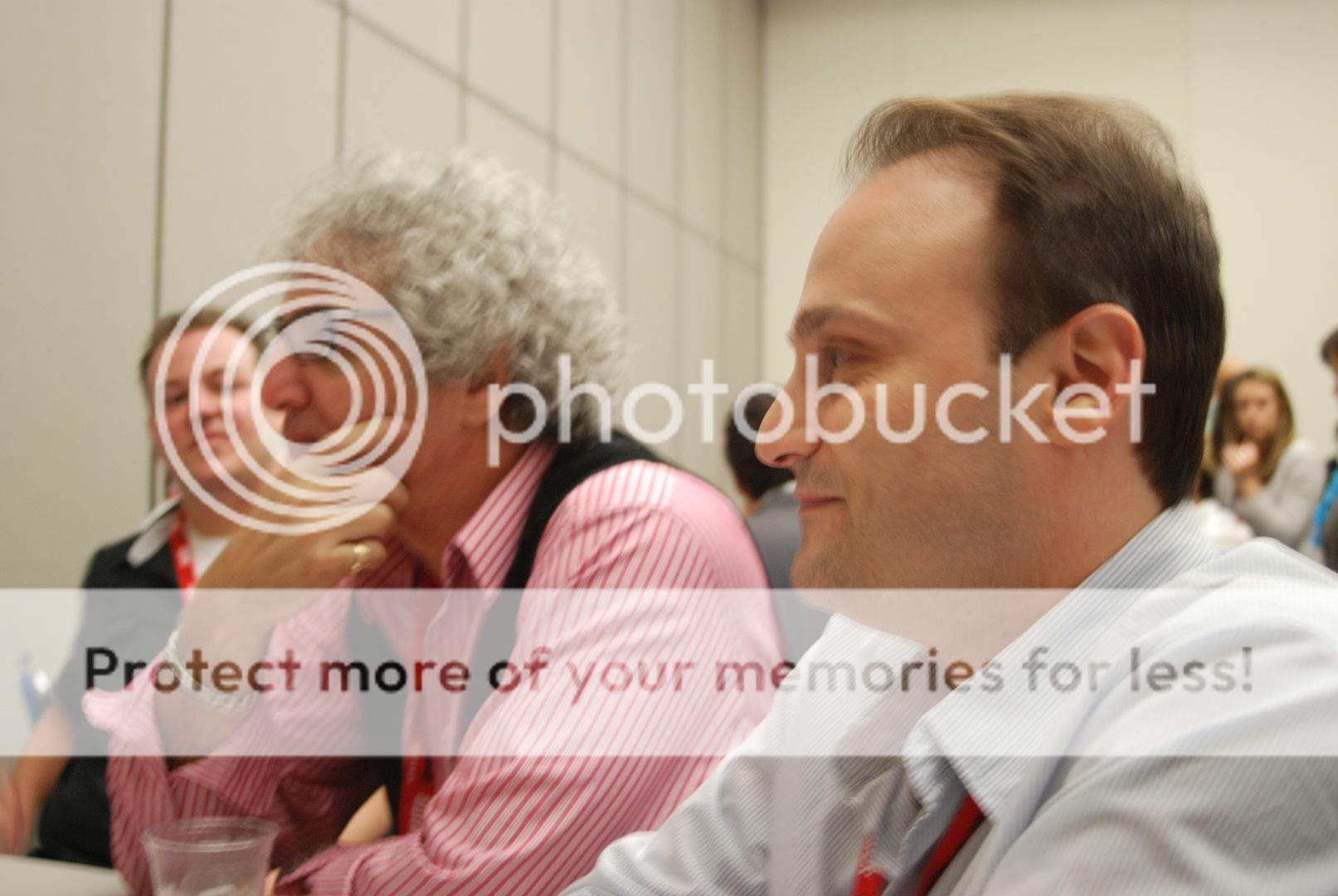
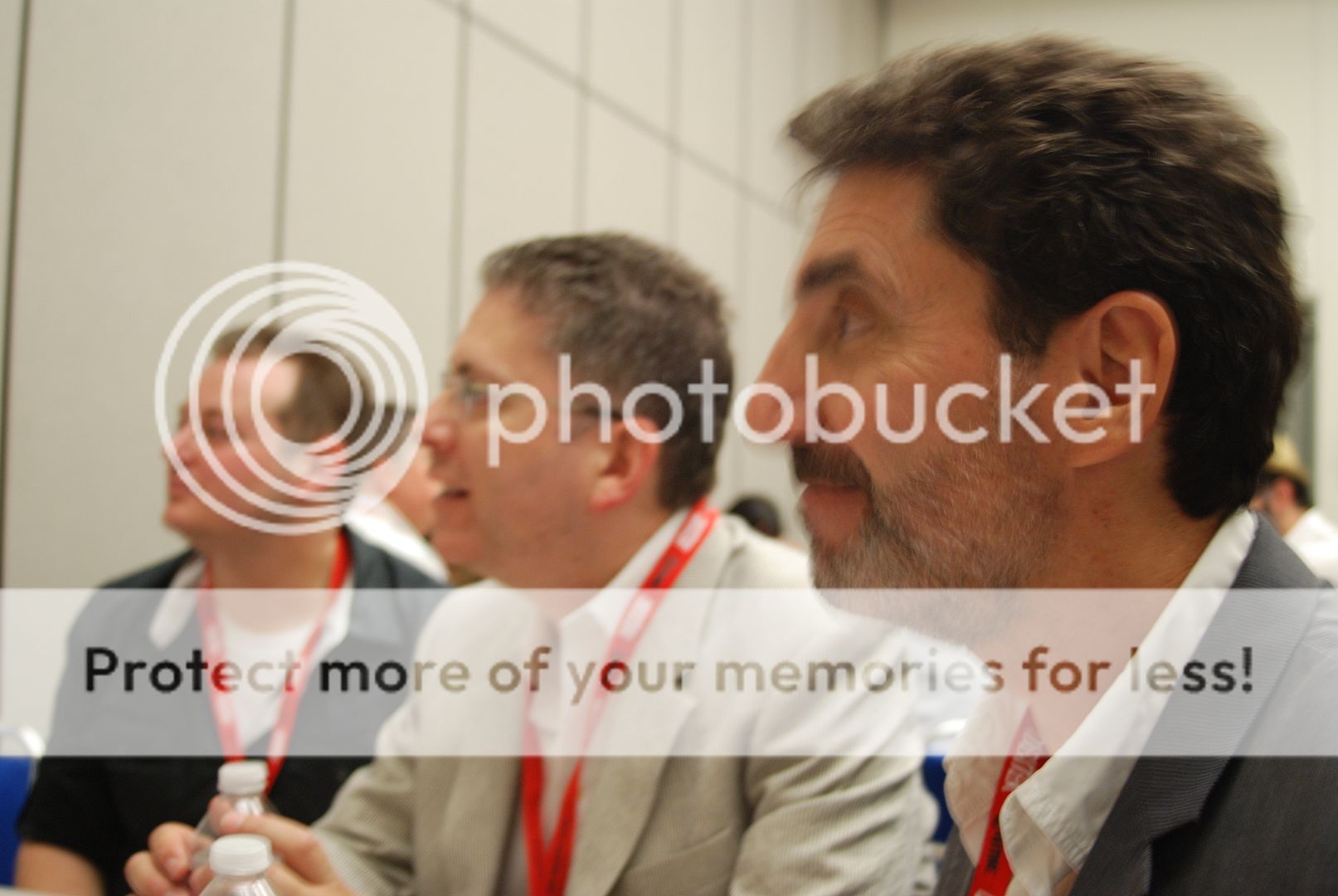
One thing fans would be surprised to learn, and the first question we asked right off the bat, is just how geeky the team behind Big Bang Theory is. Producer/writer Lee Aaronson, a self-certified comics and graphic novel geek, used to own his own comic book store. This is where a lot of the inspiration for Sheldon (and the rest of the team’s) love of geek culture comes from. They also have a close relationship to UCLA physics professor and the show’s science advisor David Salzberg. Often, they will write a line like “Hey guys, I was just working on [insert science here]” and let him fill in the blanks. We were wondering about that, too!
Geeky enough? Not even close. Showrunner and co-creator Bill Prady is a former computer programmer. He’s far more excited about Apple founder Steve Wozniak guest starring on the show than any fame or fortune that has incurred because of it. He and
co-creator Chuck Lorre maintained that the geek culture was their most important singular focus in writing the show. As one might glean from walking the halls of Comic-Con, they maintained that all geeks/nerds/scientists are not the same. There is a lot of heterogeneity amongst them, and differing, personal passions—be they Star Trek or the mathematical concepts behind string theory. And where do they get all their geeky throwaway lines? “Oh, those are all available on the internet!” And THAT is why we love Big Bang Theory.
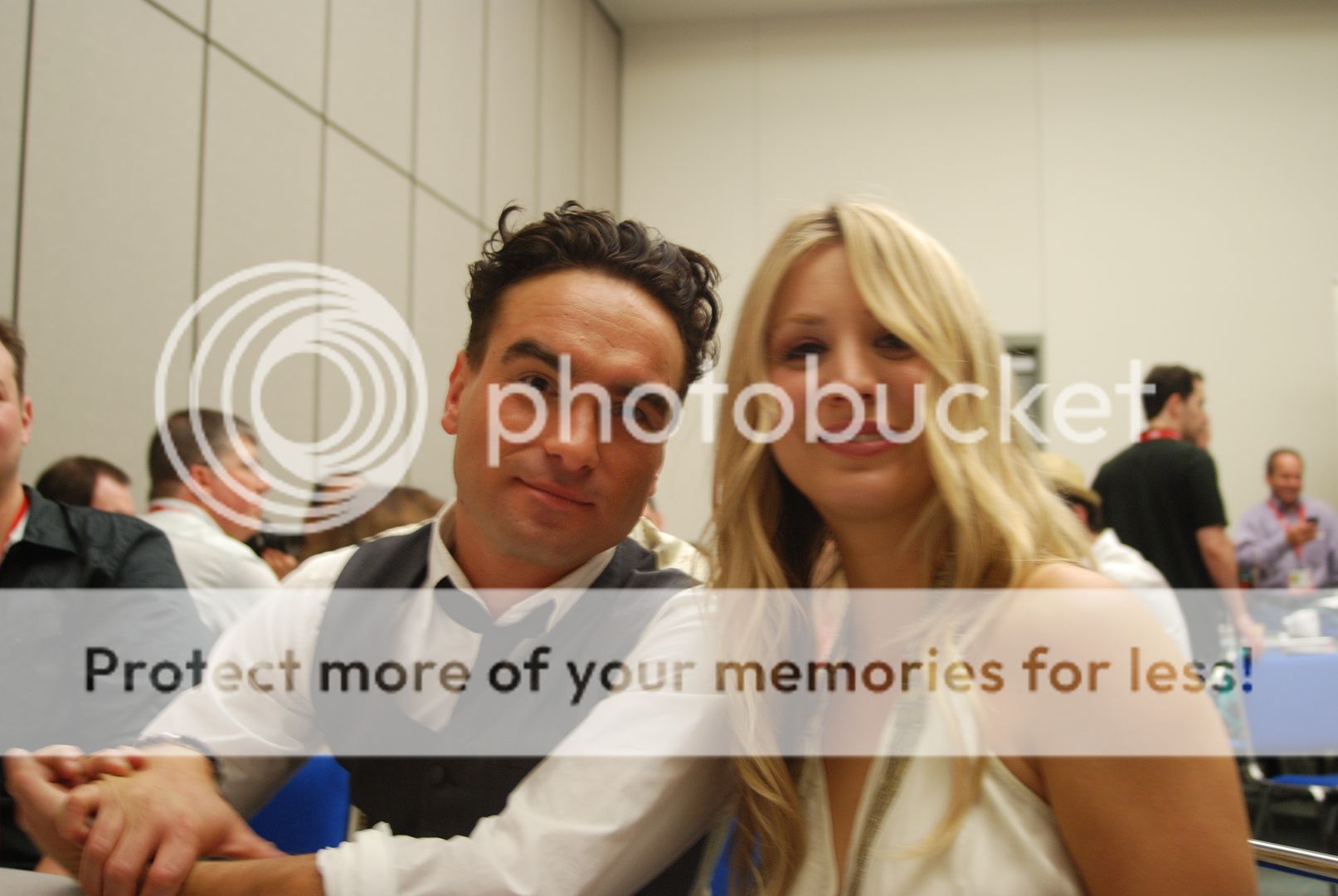
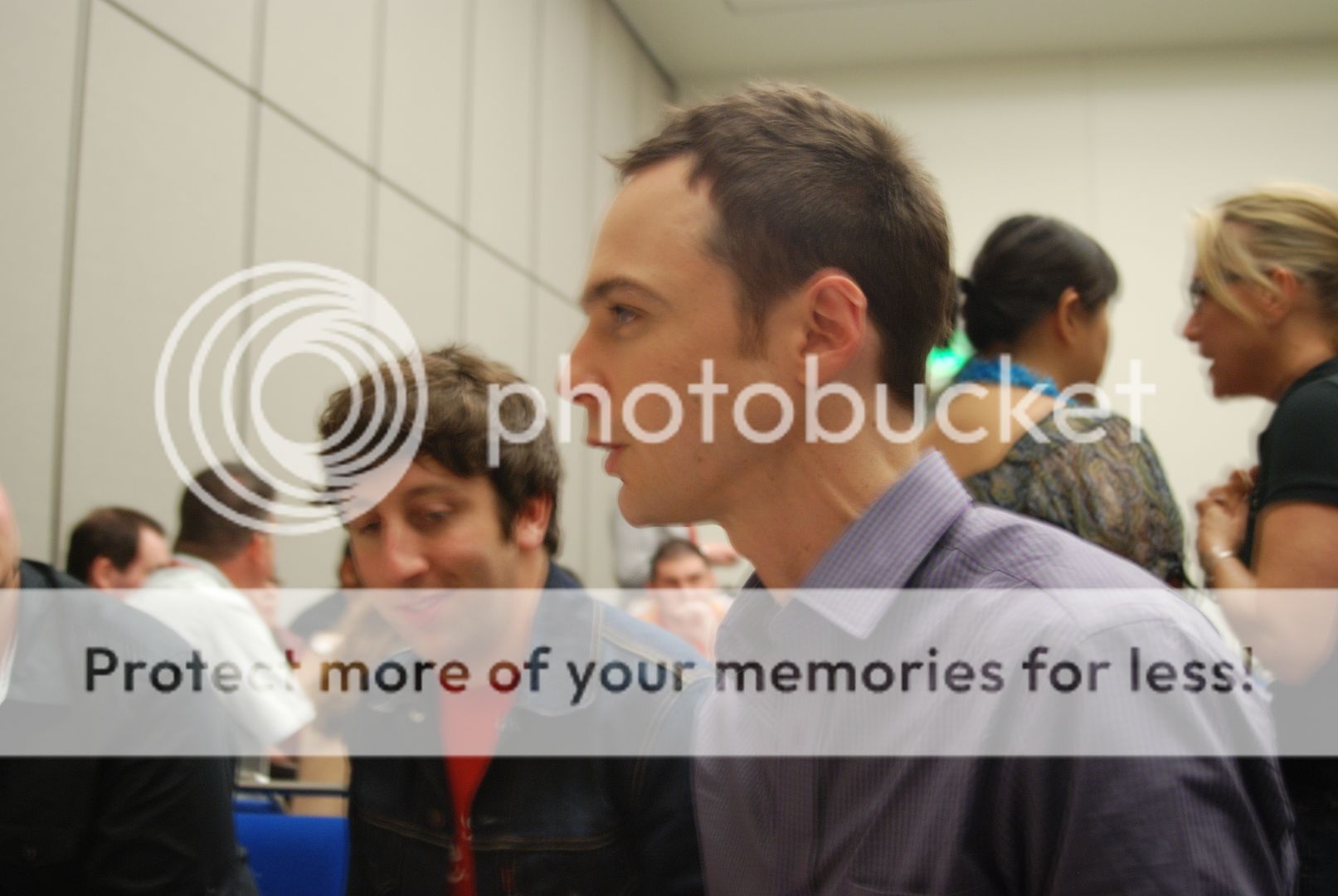
The actors themselves get right in the thick of the fun. Kaley Cuoco, playing perhaps the non-geekiest of the bunch in Penny, has nevertheless embraced geekdom. Her latest love? Her iPad! She and Johnny Galecki would both like to see a romance blossom between Penny and Sheldon (“Peldon,” joked Cuoco), but acknowledge that the road from platonic friendship to romantic involvement is filled with bumps and individual growth. Jim Parsons, who I shamelessly adore, started his time with us by telling me to shove it. He was, of course, talking about my tape recorder, but when I joked that I couldn’t believe Sheldon told me to shove it, his reply was: “And he’d tell you to shove it again and again!” Before telling Simon Helberg to bite him. Nice to know he stays in character so well!
We couldn’t leave a Big Bang Theory press room without getting our favorite superior elitist nerd to do something only for ScriptPhD.com fans. So here you have it, kids. From Jim Parsons, to you… a personal “Bazinga!”
Comics Design
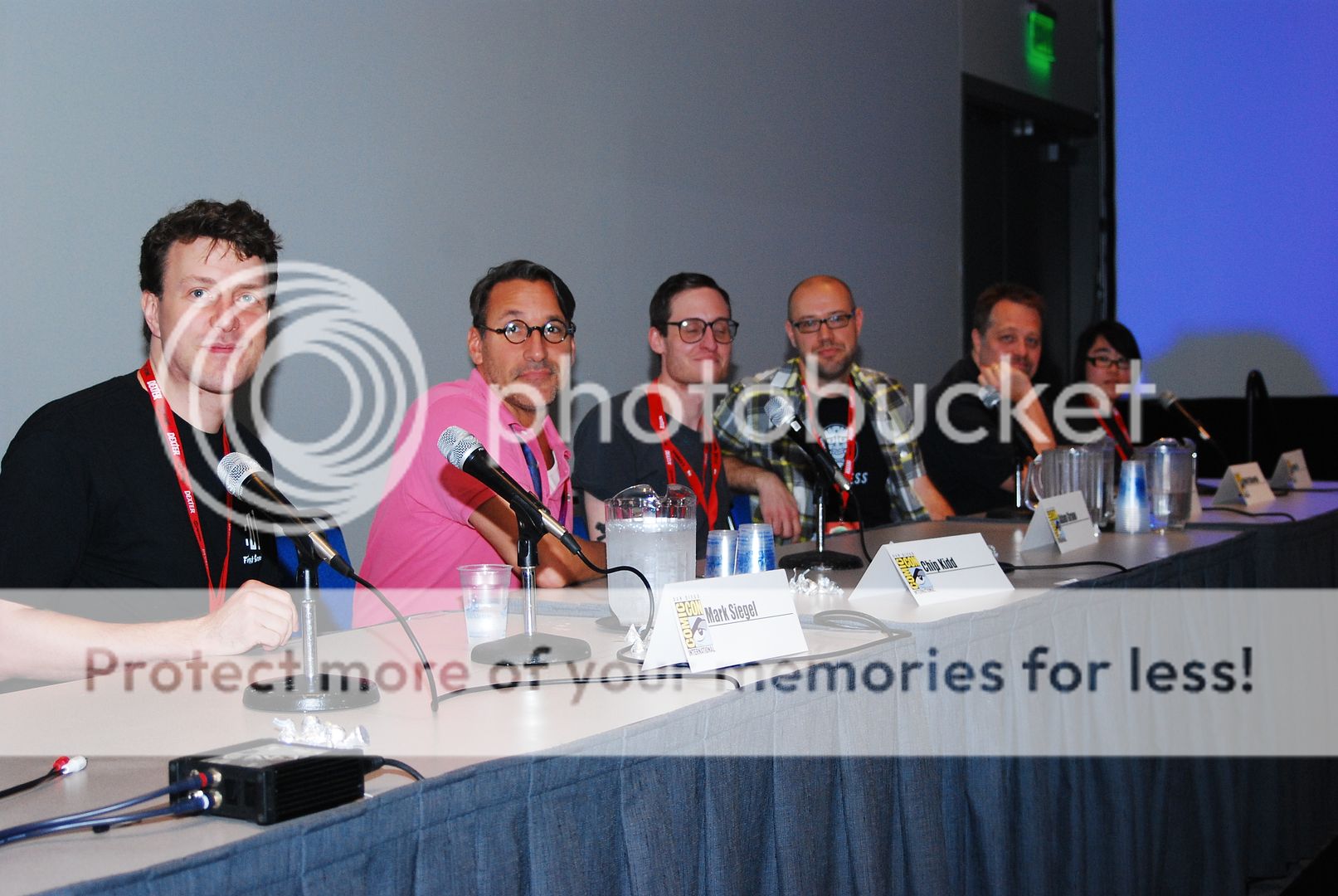
One of THE most fascinating panels that we attended at Comic-Con so far was on the design secrets behind some of your favorite comics and book covers. A panel of some of the world’s leading designers revealed their methodologies (and sometimes failures) in the design process behind their hit pieces. An unparalleled purview into the mind of the designer, and the visual appeal that so often subliminally contributes to the success of a graphic novel, comic, or even regular book. We do, as it turns out, judge books by their covers.
We will be revealing each designer’s comments on their thought and art process, but are waiting for images from the panel to be emailed to us. So consider this a placeholder until we can finish this writeup and include it in Saturday or Sunday’s coverage. Stay tuned . . .
Graphic Novels: The Personal Touch
(From our correspondent Bryy Miller)

Some panels have mysterious names, some not so much. This one belongs in the latter category. There was no hidden meaning behind the phrase “personal touch.” This was all about the writers (Gabrielle Bell of Cecil & Jordan in New York, Howard Cruse of Stuck Rubber Baby, Vanessa Davis of Make Me A Woman, Larry Marder of Beanworld, Jilliam Tamaki of Skim, C. Tyler of You’ll Never Know, and moderator Shaenon Garrity of Skin Horse). More importantly and interestingly, it was about who they were. Some didn’t know who they were, others did, but they all knew one thing: that something inside of them needed to write.
Tamaki started off the discussion by stating perhaps the simplest answer of why she writes what she does, “I think that’s the only kind of book I wanna make.” Davis continued by adding that “anytime… it’s going to have a personal touch. Comics can soak up the people’s idiosyncrasies and sensibilities.” Marder, perhaps the odd man in the group, stated that even though his autobiography is a FANTASY, it still is an autobiography in the sense that it tells stories about his own feelings. Before anyone else could chime in, C. Tyler (arguably the oldest member of the panel) shot to life with an amazing amount of energy and playfulness. “I’ve taken autobiographies for granted.” she started “I know we’re at Comic-Con, but I hate superhero comics. When I read the first autobiographical comic, I was floored… it was disturbing and in a comic.” She went on to describe how she is fascinated with the idea of putting yourself out there, grabbing pieces of scraps from the table and showing us as if they were her life story – or even her creative process – in visual form. She would get extremely animated, and it really helped to humanize the element of the mysterious writer’s block and constant internal struggle to find how to portray your story. She ended her opening remarks with this, “the personal touch for me is I do it all by hand.”
Bell was the most reluctant to speak, but also, besides Tyler, the most visual. Not in the sense that she was very gesticulative or alive, but that she obviously was thinking very hard but having trouble in how to phrase her thoughts. “I try to cut my personal touch out,” she started, displaying the classic writer’s twitch of not looking directly at her audience “[I try to] make it universal. Professional.”
This instigated a very visceral response from Tyler, who on the spot tried to get into an earnest conversation with her fellow comic artist about what it means to be professional. Sadly, it didn’t last that long as Bell migrated back into thought. Cruse then brought up the point that, if your content is good, then mistakes in your craft are easily overlooked by a reader. The discussion (because calling it a panel at the end would just feel weird) had reached its time limit. Cruse gave some parting advice to young writers, “It will literally paralyze you to think of how many people have an idea similar to yours.” Marder stated that you have to fail in public. Garrity reminded everyone to heed that advice, as “Carol, Larry, and Howard have been in the comics since the seventies.”
Tyler let out a self-taunting gag.
Reign of the Dinosaurs
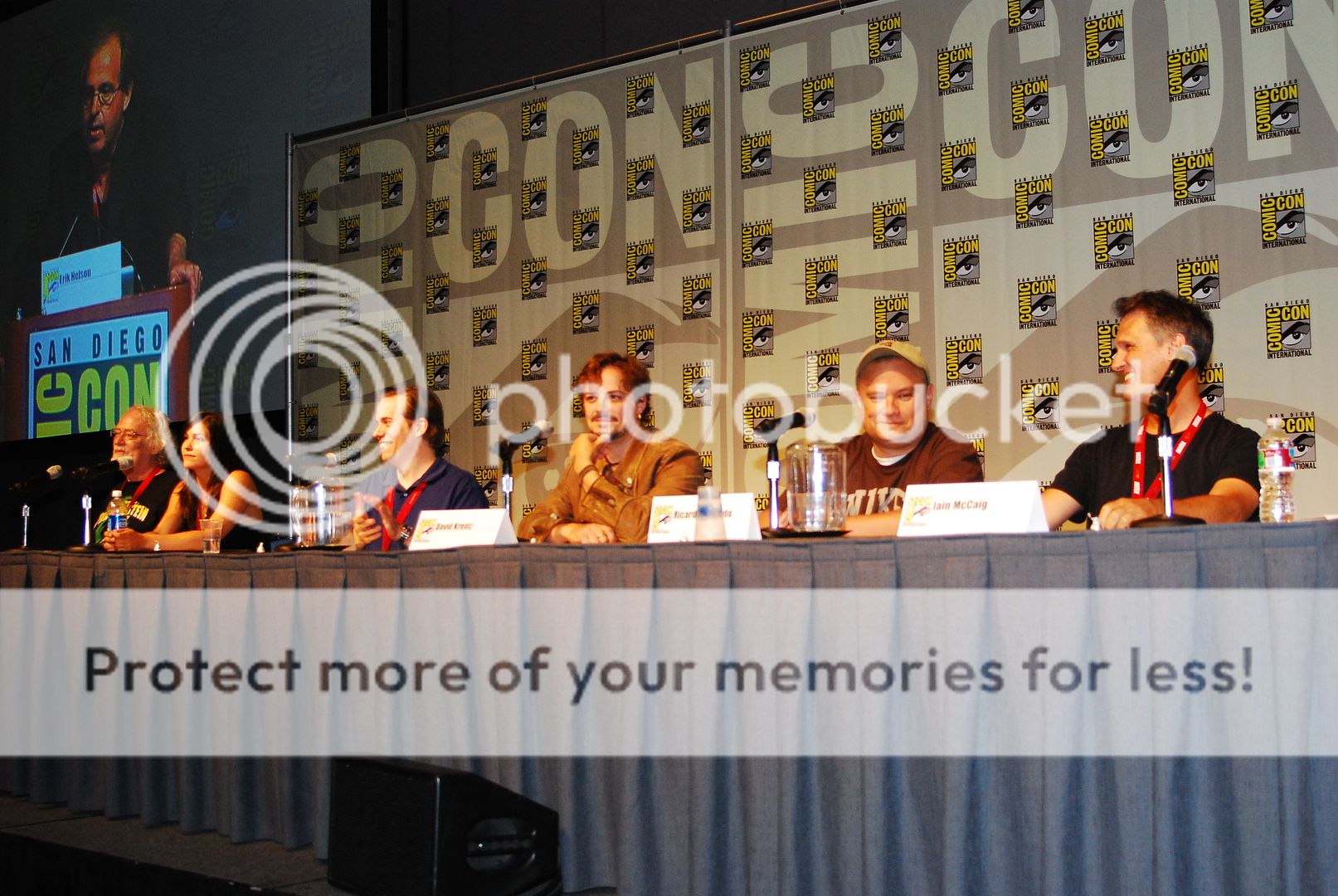
the Dinosaurs creative team (from left to right): Pete Von Sholly, Mishi McCaig,Tom DeRosier, David Krentz, Ricardo Delgado and Iain McCaig. (Executive producer Erik Nelson speaks on the jumbotron.)
In November of 2008, the hoi polloi at Discovery Channel approached producer Erik Nelson (Grizzly Man) with a simple request: “the ultimate kick-ass dinosaur show.” They poured enormous resources, creative and fiduciary, to create a television series that will truly break ground, both for Discovery Channel and its own medium. Scripted, yet unnarrated, scientifically stunning, yet bereft of the omniscient “talking head” paleontologist, Reign of the Dinosaurs is the ultimate exercise in “show don’t tell.” Premiering in the Spring of 2011, Reign will consist of 36 self-contained episodes erected from the art up. The stories will be chronological, detailing the rise, reign, and ultimate extinction (with a twist!) of the dinosaur species. But unlike the plethora of educational shows that cover the same topic, these will be rooted in storytelling, in treating the dinosaurs not as dinosaurs, but characters with whom we share an emotional connection. Trust me, having seen the first few world-premiere clips, you will care for these creatures, and the show will both exhilarate you and break your heart.
The true key to the success of Reign of the Dinosaurs was a dedication to amassing cream of the crop talent, formerly of Disney and Pixar, which allowed them to channel superlative animation and design talents towards an ambitious format. Along with Nelson, the team (and Comic-Con panel) consisted of renowned artists Ricardo Delgado (Dark Horse’s Age of Reptiles), Tom DeRosier (Lilo and Stitch, Mulan), self-proclaimed dinosaur nerd David Krentz (Disney’s Dinosaur, John Carter of Mars), Iain McCaig (Star Wars 1, 2, and 3), Mishi McCaig (Iron Man), Pete Von Sholly (The Mask, Darkman). Along with showing the audience their two (so-far) completed “cold open” teasers that will open episodes of the show, several of the animators simulated storyboard pitches (see picture below), just like the ones they would exchange in a writers’ room for several forthcoming episodes.
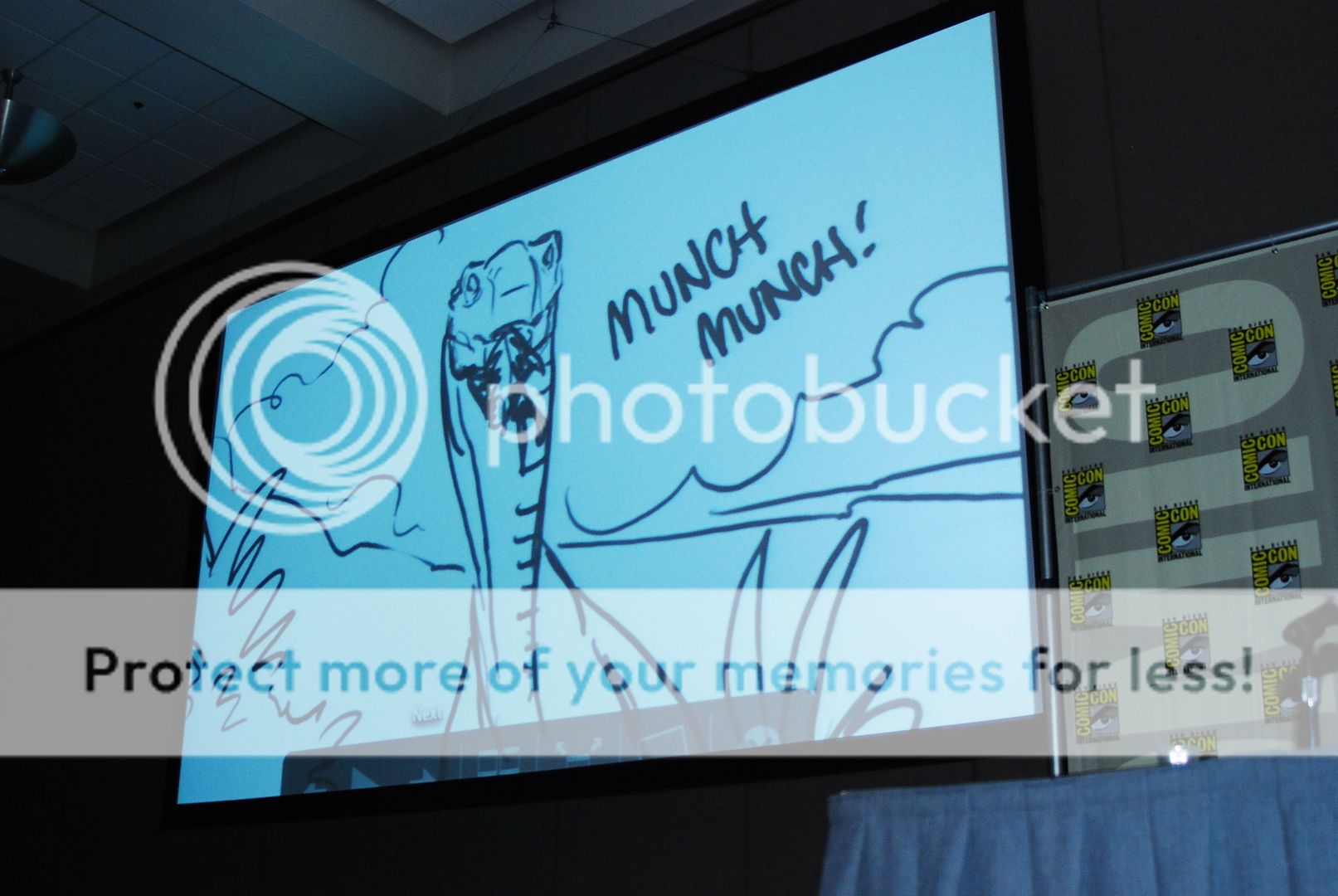
Several things impressed me upon the early viewing of Reign of the Dinosaurs, aside from the stunning art direction and well thought-out design. First of all, this show is really cheeky and funny. When the writers say that they’ll give the creatures personalities, they mean it, and it’s all done through expository action rather than showy narration. An early cold open has a dinosaur, trying to soothe her babies to sleep in the wee hours of the dawn, annoyed at the incessant chirping of a smaller dinosaur deep in the forest. Finally, she marches over and does what a dinosaur would do: bites the head off of her more annoying, diminutive co-habiting pest. Literally. Secondly, the stories pack an emotional wallop. A cinema-quality sequence shown at the end, taking place post-impact of the asteroid that ultimately killed off the dinosaurs, has the post-apocalyptic feel of Cormack McCarthy’s The Road (which the illustrator said influenced him) and visual appeal of Blade Runner. The ending, a hopeful coda on the extinction of the dinosaurs as an evolutionary stepping stone for our modern birds, had me sobbing. And then giving the panel a standing ovation.
Spring of 2011 is far away in television terms, but close enough for me to say this. Be excited, folks. Be very, very excited.
From the Press Room: Reign of the Dinosaurs
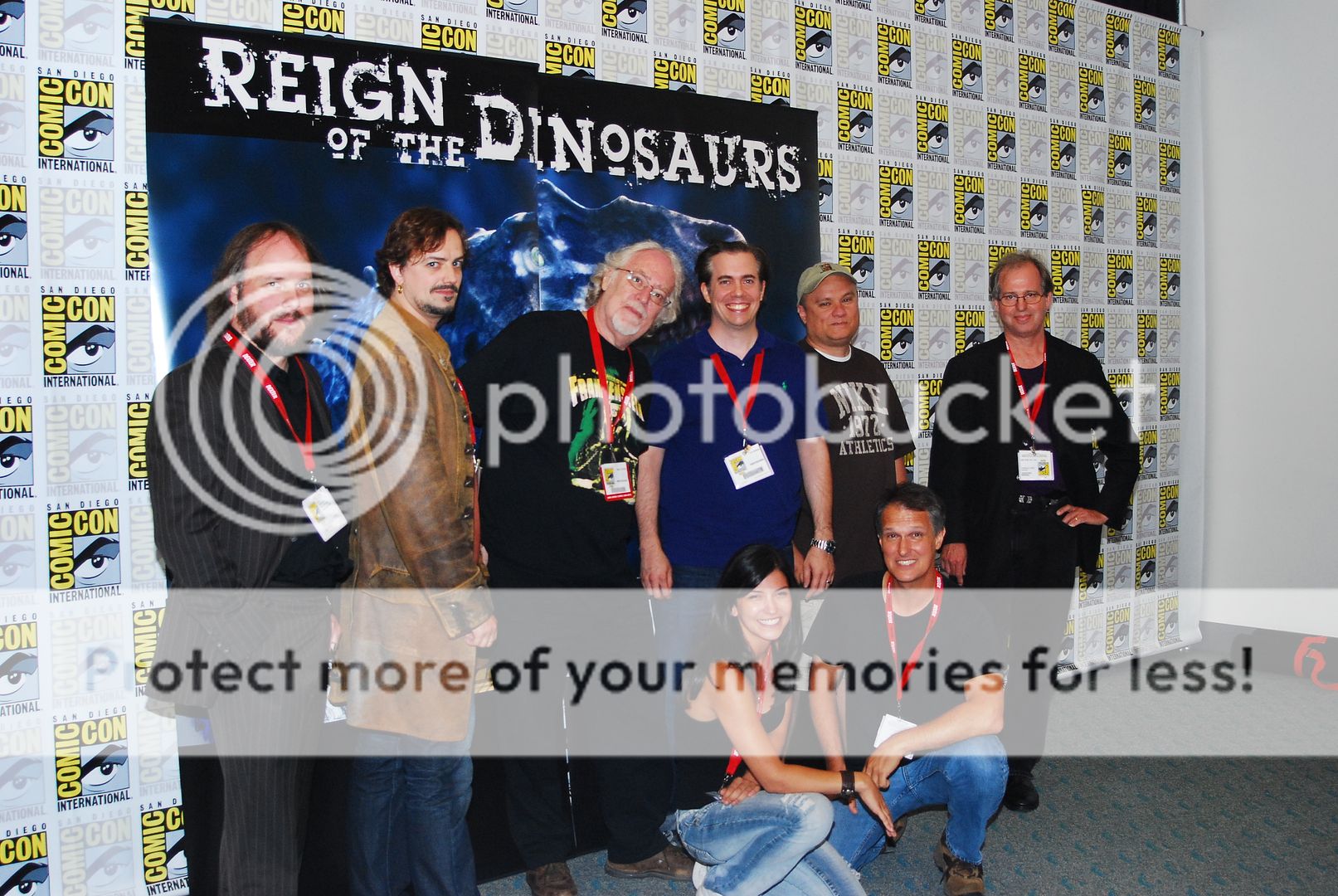
Not only did we get treated to a front-row preview of Reign of the Dinosaurs, ScriptPhD.com was extraordinarily fortunate to join the Discovery creative team for an intimate roundtable discussion panel after their panel. We were able to get enormous insight into the team’s collaborative process, storytelling aims, and dedication to balancing scientific accuracy with emotional connection, all while reinventing an entire medium. Ambitious? Just slightly.
One of the first things that impressed me upon talking to the Reign of the Dinosaurs team after their panel was their sheer dedication to, almost obsession with, “getting the science right.” Mishi McCaig and Iain McCaig spoke at length about the team’s dedication to nearing the line between science and entertainment. Hugely important to the project was the involvement of renowned University of Maryland paleontologist Thomas Holz, Jr., who cross-checks and gets pitched all the storyboard ideas. The behavior depicted in the show is speculative, but based on facts. This includes the animal’s muscle movements, how they would hunt prey, how they would interact—all aided by the paleontology knowledge of illustrator Dave Krentz. Ultimately, the team wants interest in the show to launch a more widespread educational initiative, which will include a Discovery multi-media website, and other supplementary materials to the show itself. Even when stories delve into the outrageous or fun, they’re rooted in research. A clip depicting high dinosaurs hallucinating was rooted in the marula tree, whose hallucinogenic fruit animals will eat and get high off of.
Producer Erik Nelson and illustrators Tom DeRosier and Ricardo Delgado spoke at length about the collaborative process of making the show, which they described like a TV writing room, only with animators. “Everyone’s sensibilities came together in a ‘hive mind’,” said Nelson. This visionary approach was important to the team, which is essentially trying to reinvent a TV genre. The last non-narrated, no-dialogue animated show was Walt Disney’s “Silly Symphonies” back in 1938. Needless to say, we’ve come a long way since then. The team was amazed at how constructing the dinosaurs’ stories moved them, comparing their effort to “March of the Penguins,” another simple vehicle showcasing animals that was rooted in an emotional audience response. This empathy for the dinosaurs peaks with the show’s conclusion, in which the dinosaurs die out (spoiler alert!), but which is still painted in an upbeat, survivalist way, as most geologists and paleontologists agree that modern birds are the direct evolutionary ancestors of dinosaurs.
“We’re not trying to hook you as a dinosaur person,” concluded Delgado. “We’re trying to hook you as a human being.”
Two last fun tidbits from today. Last year, on Day 3 of Comic-Con, we got geeky in the press room with our friend Barry of The Ugly Couch Show. When we saw each other again this year, we thought we’d start an annual tradition. So here it is, ladies and gentlemen. Two very tired, cranky, overworked press corps members getting silly in the press room:
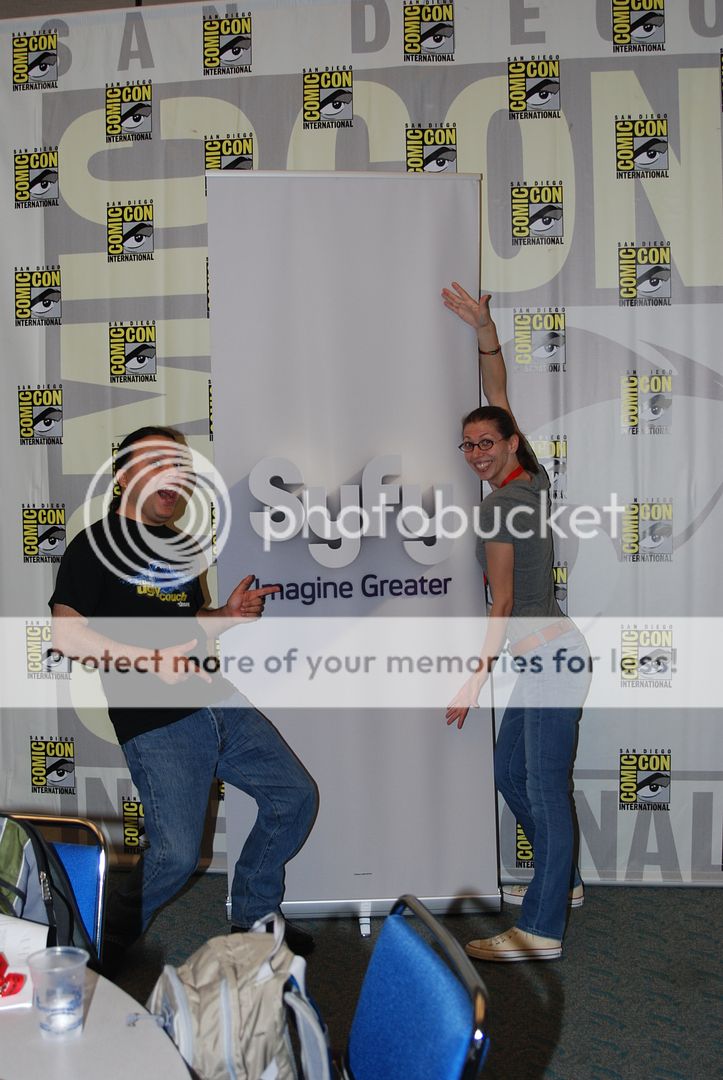
And last, but definitely not least, is a very worthy Day 2 Costume of the Day. These ladies hit it out of the park. Bonus points if you can tell us which comics they’re representing:
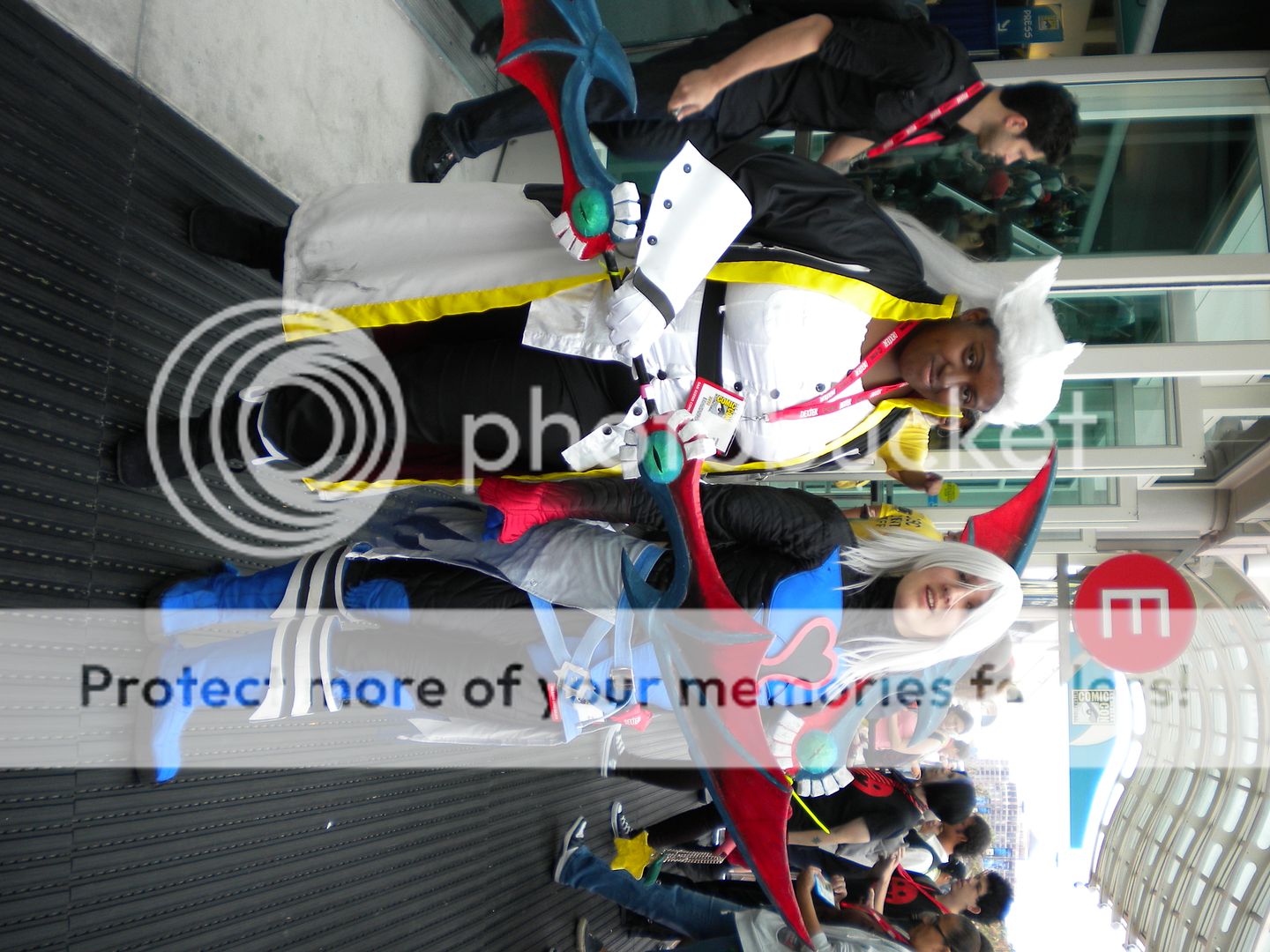
Come back tomorrow for more geeky sci-fi fun! And don’t forget to become a fan of our Facebook fan page for extra Comic-Con photos and a chance to win amazing surprise swag when we get back from San Diego.
~*ScriptPhD*~
*****************
ScriptPhD.com covers science and technology in entertainment, media and advertising. Hire our consulting company for creative content development.
Subscribe to free email notifications of new posts on our home page.
]]>
Nothing has done more to reinvigorate discussions about energy and fuel dependence than the tragic oil spill currently afflicting the Gulf Coast [excellent resource for trajectory, timeline and news sources]. Though scientists and oil manufacturers continue to debate the validity of the “Peak Oil” theory, a very uncomfortable reality looms that oil production may not be able to keep up with thirsty demand. With an ever-increasing global population, a constant proliferation of technology choices and lifestyle improvements, and a rising middle class in third world countries, the factors contributing to fuel consumption may be the precipice of an eventual geopolitical crisis. In an effort to showcase their dedication to addressing the most salient energy and environmental questions affecting our generation, the Discovery Channel, backed by founder John Hendricks, is launching a revolutionary four-part documentary called Powering The Future. In it, they address a range of economics, national security, social and scientific questions related to energy and fuel all through the single focal point of searching for a modern, clean, limitless supply of energy. Our coverage of Powering the Future includes a review of the first installment and an exclusive podcast interview with the show’s host, lead scientist for the Nature Conservancy, Dr. M. Sanjayan. For full content, please click “continue reading.”
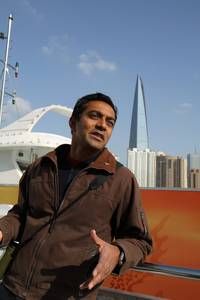
“We are the energy generation, but we as Americans do not fundamentally understand what energy is, where it comes from, how we use it, and how much we need,” remarks Dr. M. Sanjayan, host of the new Discovery Channel four-part documentary Powering The Future. Indeed, any honest retrospective of the modern energy crisis first requires a primer reviewing how our dependence on major fuel sources (coal, oil, and natural gas) came about and the unique challenges that breaking it poses. I consider myself a fairly well-informed individual, particularly on scientific matters, but in watching the first installment, The Energy Revolution, even I was amazed at the sheer interconnectedness of major electrical grids, and how much links us globally in energy delivery vessels. A German electrical engineer in the documentary compares running a major grid to being an air traffic controller.
Much of the current hope for alternative energy sources rests in grandiose ‘silver bullet’ solutions. Scientists at the National Ignition Facility are using the world’s biggest and highest powered lasers as a power source for smashing together the hydrogen atoms in a droplet of water, resulting in nuclear fusion. This mimics the way that the sun makes energy, and, if successful, would harness a limitless supply of power. Nuclear fusion research has been ongoing since the 1940s, but has never been applied successfully on a large enough scale like the undergoing experiments at the Ignition Facility. [ScriptPhD.com was recently granted an exclusive tour of the Ignition Facility, which will be covered soon in a separate post.] Another growing ‘silver bullet’ sector has been the harnessing of two natural energy sources—the sun and wind. Wind energy is the largest (and fastest-growing) alternative source of energy. Denmark gets about 20% of its power from wind sources, while the United States gets approximately 1.2%. Photovoltaic, or solar panels, more mobile and aesthetically pleasing than wind turbines, are another popular source of alternative energy. Little money has been poured into researching photovoltaic grids as a large-scale source of energy, it holds promise. The 89 petawatts of sun that shines on the Earth each year is more than 6,000 times the 15 terawatts of electrical power consumed by human. Unfortunately, both of these energy sources face one insurmountable hurdle; their mercurial natures. Our modern lifestyles require a constant influx of power, but if the sun stops shining, or the wind stops blowing, solar and wind technologies are unreliable.
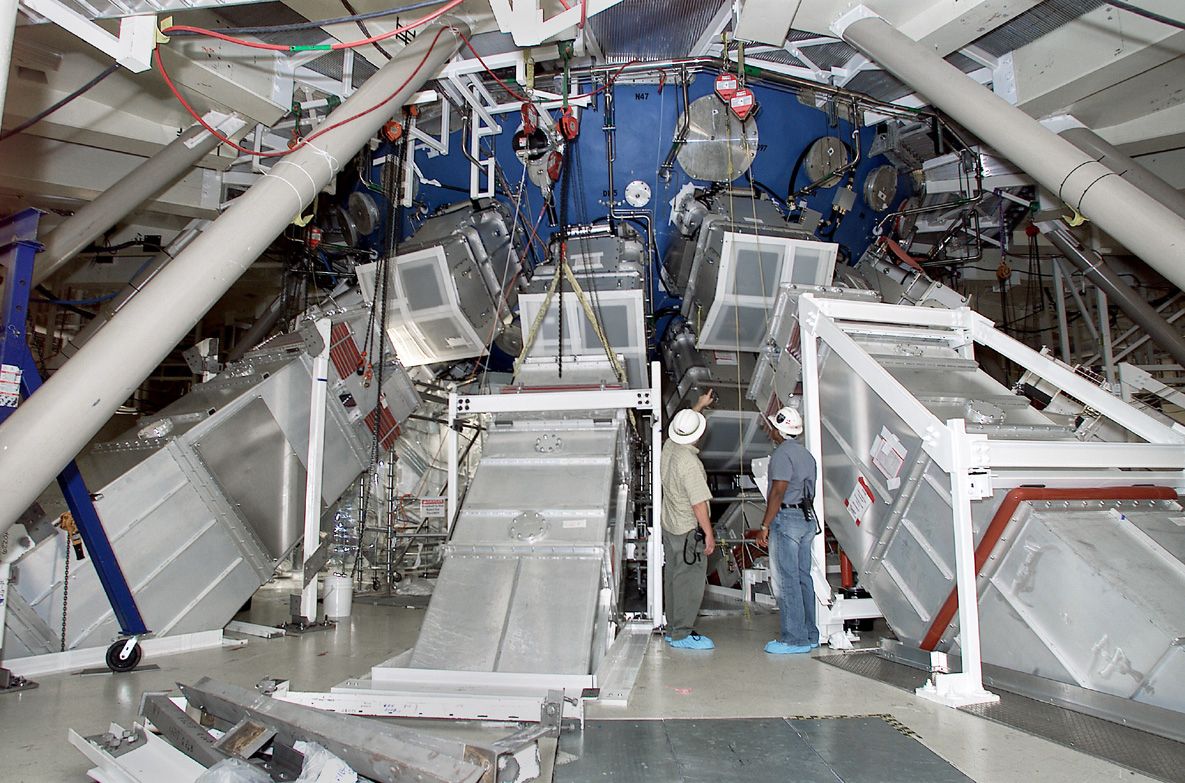
The reality is that moving energy consumption into the 21st Century will not happen with one grand discovery, but a microcosm of intermediary ones. Powering The Future provides some exciting insight into the body of research and creativity being applied to alternative energy sources. Many communities are powering themselves through clever solutions, such as Japan generating solar energy in outer space and then beaming it to Earth, or New York City harnessing wind energy from tidal waves in the East River. No role is rendered more important in this documentary than that of private organizations and academia in leading innovation and discovery. Bay Area-based Makani Power specializes in capturing and storing high-altitude wind for abundant power and energy. Caltech University solar electrochemist Dr. Nate Lewis has invented a thin coating of paint containing chemicals that catalyze the sun’s energy for power. Paint your roof, get free solar energy! In fact, just today, General Electric announced a $200 million smart grid contest for cleaner and more efficient electrical grids. The California-based X-Prize Foundation has even gotten in on the act, recently announcing a $10 million oil spill cleanup challenge.
Even those that consider themselves knowledgeable about environmental issues and research and technology of clean energy will have a lot to learn from Powering The Future. The special does an exceptional job of laying out the complex science behind concepts such as fusion and large-scale electrical grids for a lay audience to understand, while not glossing over current research in industry and academia. Moreover, rather than approaching the issue with the typical heavy-laden, moribund fatalism one often finds in these specials, Powering The Future leaves one feeling hopeful about the range of innovation happening at all levels worldwide, and the remarkable commitment of both academic labs and private companies for tireless discovery. It is this very entrepreneurial, resilient, and utterly human, attitude that will power our future more than any fossil fuel ever could.
Powering The Future premieres on the Discovery Channel on Saturday, July 17, 2010 at 8 PM ET/PT.
Finally, we encourage you to listen to our exclusive one-on-one podcast interview with Dr. M. Sanjayan (18:00), lead scientist of the Nature Conservancy, as we expand the energy discussion of the mini-series to global solutions, his thoughts on the oil spill crisis, and ways that we can impact our dependence on fuels right now.
~*ScriptPhD*~
*****************
ScriptPhD.com covers science and technology in entertainment, media and advertising. Hire our consulting company for creative content development.
Subscribe to free email notifications of new posts on our home page.
]]>
In 2006, The Discovery Channel, in partnership with the BBC, premiered the 11-part Planet Earth, the most expensive natural history mini-series ever filmed, and the first in high definition. It gave viewers a sweeping, intimate overview of the Earth’s diverse natural habitats. Yet long before Planet Earth premiered, plans were already underway for its follow-up opus, LIFE, which would focus on the animals, insects, and creatures that call those habitats home. The result, four years in the making, is historic television—never-before-recorded mating rituals, survival scenes, and brutal savagery. For the naturalist and the nature-lover, LIFE will, quite simply, change your view of life. After the “continue reading” cut, we preview the first few episodes and offer a rare candid interview with executive producer Mike Gunton. We are proud to make LIFE on Discovery Channel an official ScriptPhD.com Editor’s Selection.
The Earth is home to over 30 million diverse animal and plant species, each evolving, adapting, and surviving under rapidly changing conditions. The vast majority of these species has never before been documented in their native habitats… until now. The Discovery Channel and BBC have reprised their Planet Earth partnership, conducted over 3,000 hours of painstaking video footage, and endless hours of consultation with researchers and naturalists to create a living, breathing, not to mention gorgeous, catalogue of life as Darwin could only have been able to imagine it. Narrated by Oprah Winfrey, LIFE will be broken down into 11 episodes—the challenges of life, birds, creatures of the deep, fish, hunting mammals, insects, mammals, plants, primates and reptiles and amphibians, along with a “making of” episode—that will shed stunning light on the spectacular array of animal behavior, sometimes majestic (the penetrating gaze of Kenyan cheetahs ready for a hunt), other times flat-out bizarre (you haven’t lived life until you’ve seen a pebble toad bouncing like a taut ball down a precipitous mountain). “We wanted LIFE to represent the heartbeat of what John Hendricks thought about when he founded Discovery,” noted current president David Zaslav at a recent Los Angeles LIFE screening. “It shows you life as no one has seen it before, with most scenes recorded for the first time ever [on film or photography],” he added.
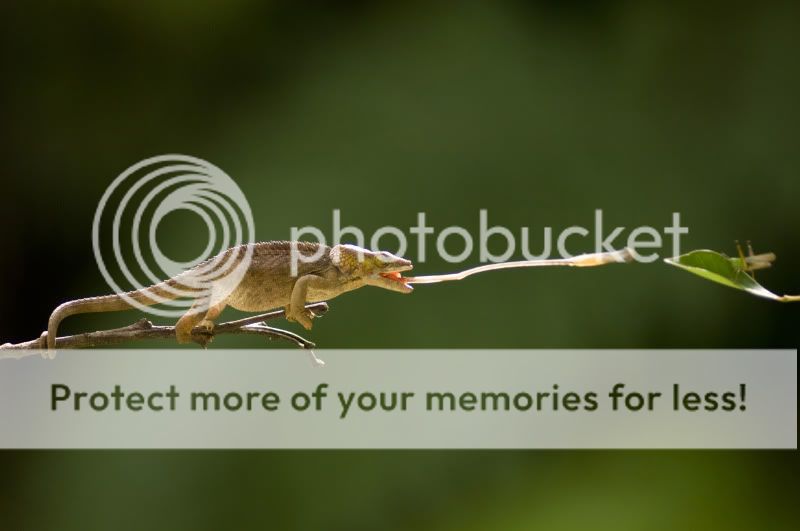
Indeed, LIFE showcases a number of television ‘firsts’—scientific and technical. Among other highlights, you will see the first footage of a spectacular humpback whale mating battle called the “heat run” (a truly mesmerizing piece of television!), killer whales stealing elephant seal calves, seduction of Vogelklop powerbirds and mating rituals of spider crabs, and my personal favorite, a Basilisk “Jesus” lizard walking on water! Take a look at a group of kimodo dragons hunting down a buffalo ten times their size in a highly calculated, precise (and vicious!) two-week attack:
In addition, LIFE producers and videographers developed a new camera tracking system—the “yogi cam”—to track migrating reindeer and elephants. Our interview below with executive producer Mike Gunton reveals more behind-the-scenes tricks and secrets of filming.
Take a look at this webisode that shows the innovative technology employed by producers and to capture some of the ‘firsts’ we’ve described:
Beyond the bravura filmmaking and technicolor high-definition images, what struck this scientist and film/television buff the most was that the personality of the animals shines through above all else. They are the real stars of LIFE. Sensitive moments of such remarkable intimacy evoke drama and suspense, relief and love. Yet midst these anthropomorphic tales, one is never led too far away from brutality and competition—the hallmarks, after all, of species survival. Scenes of lions attacking a hyena during the “Mammals” episode literally had me holding my breath, one that I was able to let go in relief as the hyena escaped surefire carnage. The dedication of parents in the wild is sometimes astonishing. A tiny frog the size of a postage stamp must swim miles against the ocean’s current every day to feed her young tadpoles an egg so that they can survive to independence. If you think human love affairs are full of spectacle, wait until you wade into the animal kingdom! There is nothing as pathetic as a lonely, rejected hippo doing the walk of shame across an arid desert and having to wait an entire year before he might seek companionship again. That same desert is home to scores of randy, chauvinistic male chameleons that are not very familiar with the concept of good old-fashioned romance; talk about wham, bam, thank you ma’am! And the primitive mating rituals of the violent, hyper-aggressive alpha male bullfrog are downright uncomfortable to watch. It is difficult to stare into the eyes of a young, intelligent Brazilian brown-tufted capuchin monkey figuring out how to use tools to crack open their beloved palm nuts and not see the face of a human toddler exploring their surroundings and gaining independence. It is difficult not to laugh at the naïve hubris of an ibex calf menacingly stomping its hooves at a predator fox whose capture it avoided by a hair’s breath and quite a bit of luck. And, after viewing LIFE, it is impossible to view animals of all size and shape as anything but breathtakingly complex and spellbindingly beautiful.
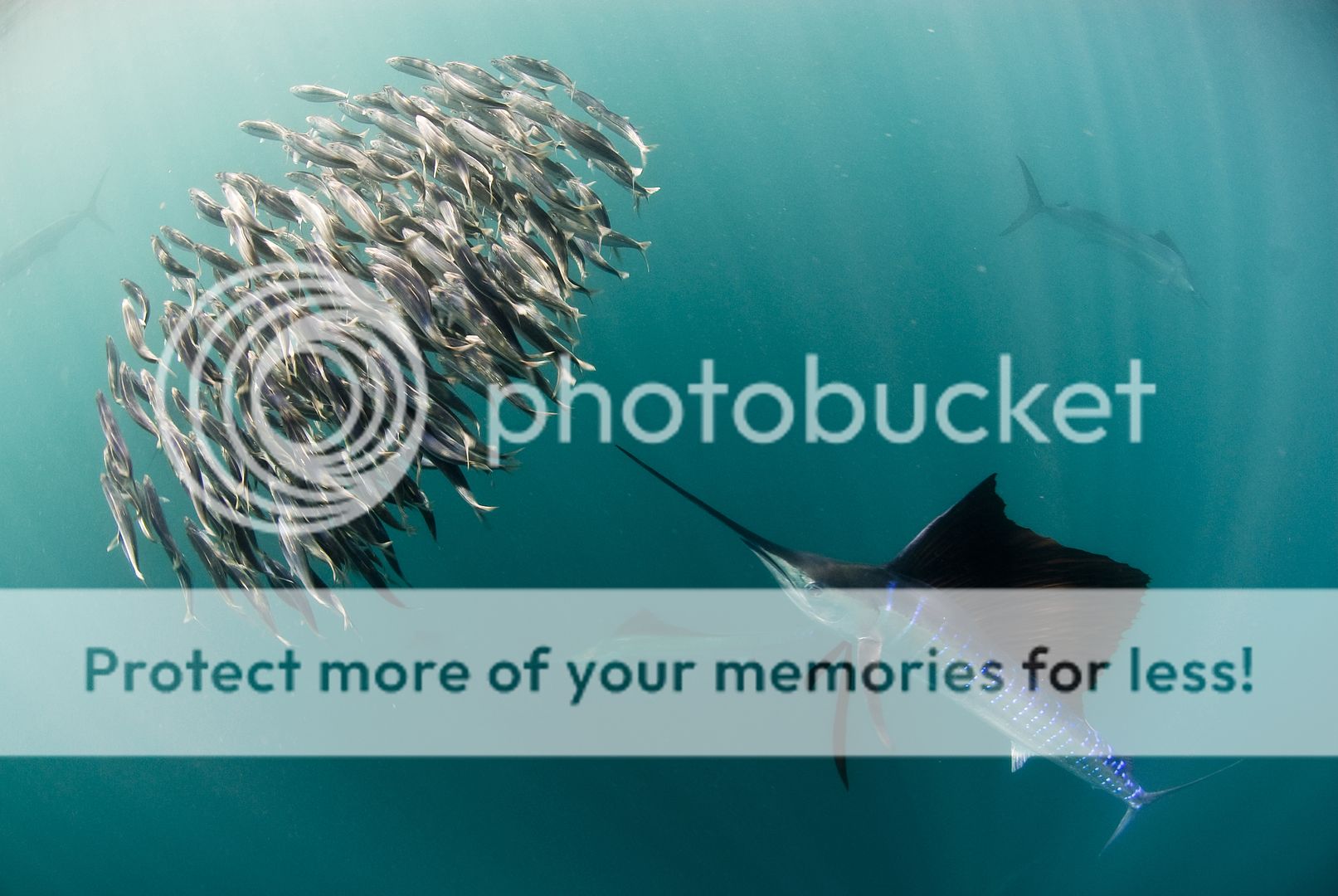
Interview with BBC Executive Producer Mike Gunton
Mike Gunton is the Creative Director of the Natural History Unit of the BBC, and oversaw production of LIFE. He has a first class degree in zoology and a doctorate from Bristol and Cambridge Universities.
ScriptPhD.com: Having now screened four episodes, and realized how grand and immense this project is, can you tell us about how the idea came about to do it?
Mike Gunton: It came about in about August of 2005, when we originally pitched [the project]. The team came together to properly begin work right at the beginning of 2006. Planet Earth hadn’t even aired; we had no idea how successful it was even going to be. The scope of Planet Earth, which was very much about the planet as a habitat and extraordinary landscapes and habitats of the world, and of course animals were in it, but they were animals within the landscape. And we felt it was kind of “the other side of the coin” to tell about that, which is about the lives of those animals and the struggles and challenges they face to survive in those habitats. So, we wondered if we could tell the complimentary side to the Planet Earth story—Planet Earth is the stage and LIFE is the play. That was broadly our thinking.
Also, of course, 2009 was the anniversary of the publication of The Origin of Species, so there was quite a lot of interest and focus on evolution and adaptation. And of course, LIFE is full of examples of extraordinary adaptation by animals, possessing adaptive “tricks”, whether physical or mental or behavioral, to overcome the challenges of survival. Then we realized that like Planet Earth, we had to be global, we had to go to every continent on the planet, and we also had to be completely broad-ranging in terms of the types of creatures and living things that we would feature to a much greater extent than we did on Planet Earth. We made sure that we’d cover everything from primates to insects and everything in-between.
SPhD: Just from the first few episodes, it seems the possibilities of choosing what animals to cover are infinite. So what ultimately dictated narrowing down exactly which species and scenarios you guys ultimately chose to capture?
MG: We decided there were, effectively, nine major groups of living things on the planet. We grouped all marine invertebrates together as a big catch-all of all creatures that life in the sea that aren’t fish. Then, to decide on the actual stories, that was probably one of the most daunting things of all, actually, to think, “There’s somewhere between 10 and 30 million species on the planet, how do we pick 150 that are going to be the most amazing, quintessential, rewarding representatives?” But we had a whole series of filters, and one of the main ones was that we did want to show people things they hadn’t seen before, things that would impress them and surprise them and show them how extraordinary animal behavior can be. Also, we wanted to show, rather than generic stories about lions or elephants or chimpanzees, very specific stories about individuals having individual challenges so that the audience sensed that when they’re watching, they’ve kind of been parachuted in on this particular animal’s life, on this critical day in its life.
SPhD: And it works quite spectacularly! I know we always want to anthropomorphize these creatures, but there was such personality that came out of some of the stories, like the poor hippo who couldn’t make his conquest, or the ibex out in Israel showing relief at outrunning the fox. So there was a lot of character that came out.
MG: See, I think this is really, really important, because anthropomorphism has a bad reputation. But I don’t think that what we’re doing is anthropomorphizing in the sense that people think it’s wrong, but actually people are frightened to accept that we’re all animals, [with] an integral spectrum of things that go on. And I think you can absolutely connect and relate to those animals without necessarily having to stretch to say these animals feel fear or concern or heroism or dedication, all those things that we admire in humans and ourselves. I think they’re absolutely there to be admired in animals. That’s something I feel very strongly myself, that there is a tendency to not think of animals as anything but little black boxes, when they clearly are not.
SPhD: Can you let us in on some of the secrets of what it took to capture these unlikely (and sometimes spectacular!) scenarios? Was it just patience, longevity, luck…
MG: All of those things, of course. I like to think we make our own luck. But luck is a big part of it. You do have to get lucky. First of all, we do an enormous amount of research, and we are drawing on a network or web of extraordinary experience. One of the things about people who work in the natural history industry is that once you join you never leave! So there are people who have worked in that place for thirty years, and the cameramen are the same. They have so much knowledge and experience that you start to “know” what’s likely to happen. And the cameramen tend to be brilliant naturalists. They have a real sixth sense about animal behavior and animal activities. So all of these things poured into the pot together, and stirred, does give you the chance to get things that you’d otherwise think to yourself are impossible. I often think to myself when I get back from a shoot, “How on Earth did we actually get that?” If you walk out into the Indonesian rain forest and hear a gibbon call, and it’s a mile away, how on Earth are you going to get anything more than a shot of that? And of course, we don’t do shots anymore—these are really complex, developed cinematic sequences. So the only way you can do that is by learning all the things in your favor: lots of periods of time, lots of science, we work a lot with the scientists. A lot of these stories actually come from them, because many of them are so new that you can’t get them in the textbooks or on the internet.
Watch a brief behind-the-scenes video that reveals some of the secrets of creating the series:
SPhD: Any precipitous moments for the crew? Anyone feel their life was in danger at any point?
MG: One of the things that we do is, we like to think that we are very safe. Knowing the animals, you don’t put yourself into situations where you are at risk. It’s very unlikely that anyone is going to get eaten by a lion, because we just know how it behaves in that way. Things where it got trickier, for example, are those komodo dragon sequences [in Episode 2]. Kevin, the cameraman, never felt particularly at risk, but he said it was unnerving because both creatures were so otherworldly. He has filmed reptiles and amphibians for 25 years, he said that once they’d made that first bite [into the buffalo that they’d end up excoriating], he felt they were like heat-seeking missiles. They weren’t going to be detracted from their mission, which was to track that prey for the next two and a half weeks. So although being amongst them was incredibly intimidating, he still felt that it was probably OK. Generally, when we film hunts, it’s over in a second. This was a kill that lasted two and a half weeks!
SPhD: Have any fun field stories to share with us?
MG: Just more along the theme of stuff that’s challenging or dangerous. One of the stories that we did that I think is probably one of the most courageous, certainly logistically the toughest, and most expensive, was we filmed a thing called a heat run, which is in the mammals program. It’s basically a humpback whale mating or courtship ritual. Effectively what happens is that a female, when she comes into season, will attract the males by various means—she whacks her pectoral fins and she bellows—and the males are then attracted to her. And once they get close to her, rather than allowing them to court her or to mate with her, she then swims off, and then effectively induces them to chase after her. While they’re doing that, they’re then in a fight with each other, and they’re all scrapping to see if they can be the one to eventually swim alongside her and be accepted to be the one to mate. These males get more and more hyped up and they start crashing into each other and push each other down and they blow these amazing bubbles out of their blowholes, and they come leaping out of the water and crashing down. And they’re swimming at seven or eight miles and hour. They get like a rocket.
To film them was incredibly challenging. We filmed them from the air, which meant that we had to have a helicopter. Now, this is the middle of the ocean, so we had to get the helicopter from Fiji and it was right at the end of its range. Filming from the boat itself was quite tricky, just to be able to keep up with them. But the most challenging and the most tricky thing of all was actually getting the underwater shots. Because the cameraman that did this couldn’t use scuba gear, the bubbles emitted from which would upset and disturb the whales. He had to do it on a snorkel. Then he had to take a single breath. So when these whales were hammering along, we had to get him in the boat, get ahead of them, plop in the water, take a breath, dive down, get some shots, come to the surface, take a breath, and so on about four or five times. He said it was like standing on a freeway with six juggernauts, six huge Mac trucks hammering towards him, with the drivers all having their eyes shut all while he’s having to hold his breath. We were in the water about 17 days, and in the end, it all boiled down to about a couple of hours.
SPhD: Given everything you’ve discussed, for people reading this before they’ve watched the mini-series, what would you guys collectively like the audience to get out of this? What are some of the things you hope that all this effort that went into this mini-series rewards them with?
MG: On two levels. As a television series, I want them to come away with thinking they’ve been immersed in the life of these animals, that the way we’ve done this, and the effort we’ve taken places them into the intimacies of these animals’ lives. And especially with the way that we’ve filmed it, so that you get the drama and the pace of and the excitement of the animals come through. And the other thing is, on a more philosophical level, I would hope that [the viewers] would take away, as I do, that the things that we admire in people can also be seen in animals. And that they are passionate, that they are concerned, they are wonderful, caring, sharing, powerful, aggressive, but they are individuals who have these unique characteristics. As a final though, people have asked me what I thought about LIFE, I can think of one word. Heroism. They are heroic. A lot of the animals do things that genuinely make the hairs on the back of your neck stand up in admiration of their heroic endeavors to survive.
LIFE premieres on the Discovery Channel Sunday, March 21st, 2010 at 8 PM ET/PT.
Enjoy more interactive content, including series photography, webisodes, a global map of endangered species, and and interactive “gene machine” to show relatedness of animals on the LIFE website. You can also follow LIFE on Facebook and Twitter.
View series trailer here:
~*ScriptPhD*~
*****************
ScriptPhD.com covers science and technology in entertainment, media and advertising. Hire our consulting company for creative content development.
Follow us on Twitter and our Facebook fan page. Subscribe to free email notifications of new posts on our home page.
]]>
